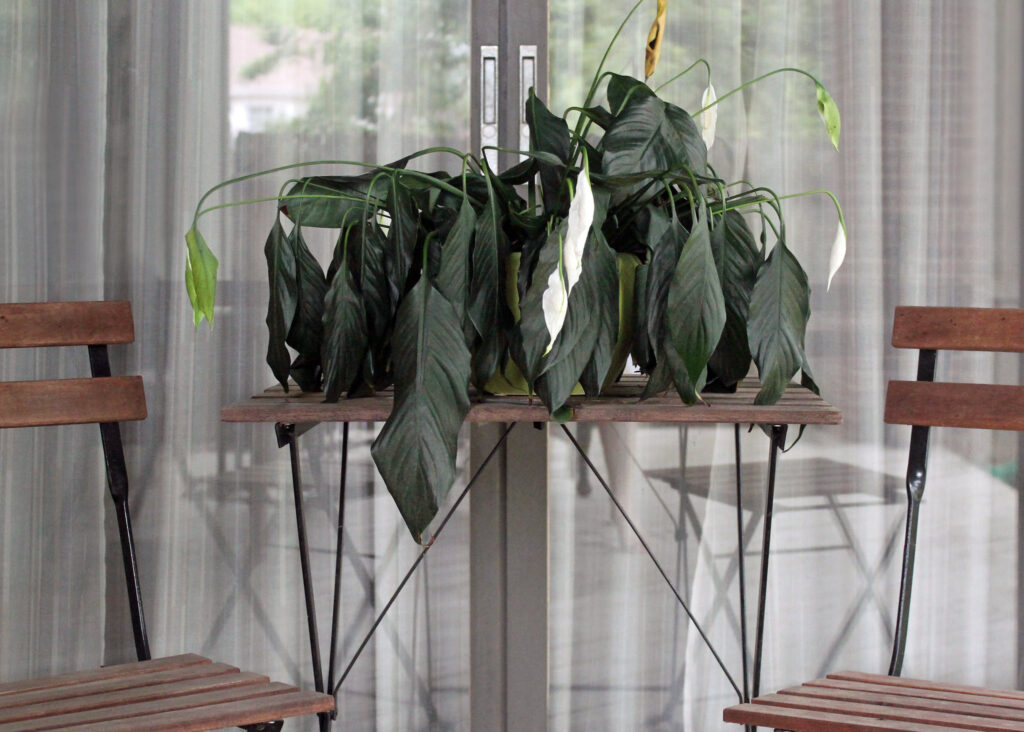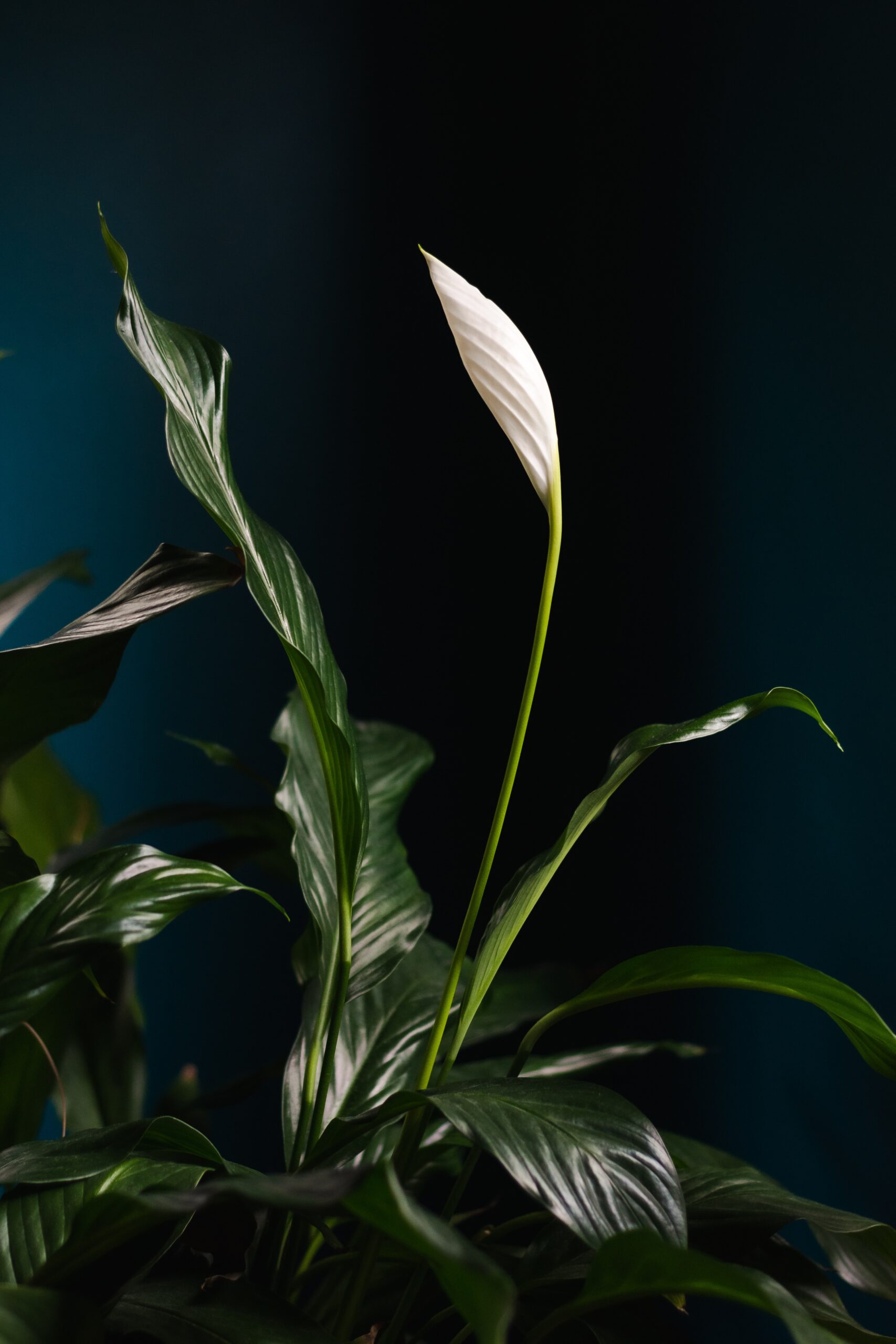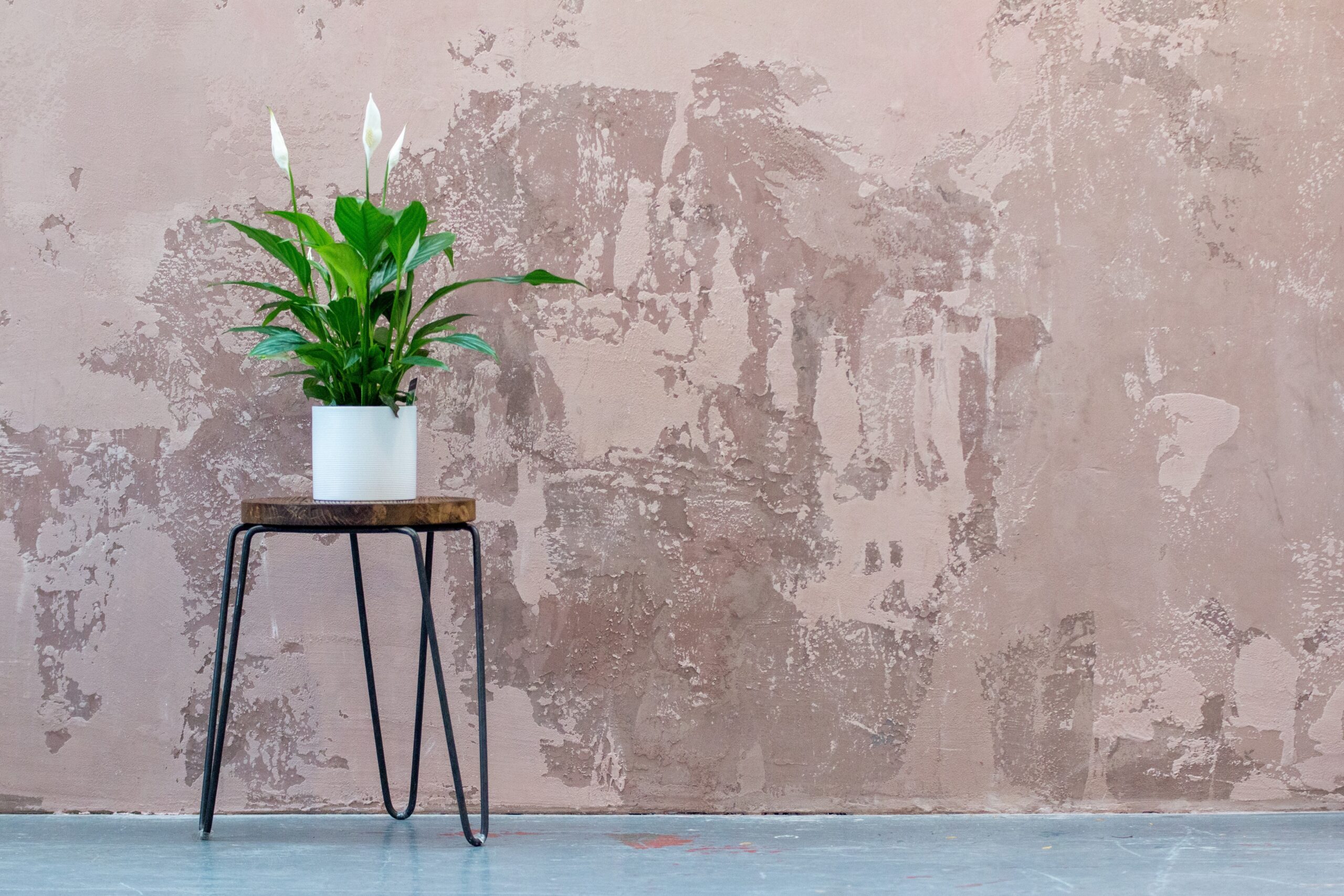The peace lily plant, known as the Spathiphyllum in the scientific community, is one of the more well-known and beginner-friendly houseplants out there. Despite what their nickname might imply, they are not true lilies. These tropical plants are part of the Arum family and are native to the tropics of Central and South America. Discover peace lily top reasons they droop fix it.

In their natural habitat, they live under the canopies of trees and happily thrive in rich soil and in indirect light. Due to this, it is suspected that changes in heat, water, lighting and diseases can cause drooping in their leaves. But of course, before you get to the solution, you first need to identify the problem. However, once you determine the cause, it becomes easier to bring this plant back to life.
RELATED: Here Is Why Your Peace Lily Flowers Are Turning Brown & How To Fix It Fast!
As an overview, the most common reasons you’ll encounter for drooping peace lily plants are overwatering, underwatering, overexposure to light, root rot, and repotting. To nurture back your peace lily, you must repot it in a well-draining soil mix and place it in a location where it can get partial shade, instead of direct sunlight. Remember to water it only when the top two to three inches of the soil is dry to avoid overwatering.
Now that you have your hands on the overview, let’s dive deeper into what may be causing the drooping and how we can address each one.
Causes of Drooping
1. Overwatering
When you overwater your peace lily, this can lead to waterlogging and an overly moist pot. This essentially drowns your peace lily, causing it to suffocate as it is not able to get enough oxygen and thus not able to draw in nutrients. Aside from suffocation, fungal diseases start to take hold due to the excess moistures. Your peace lily might be overrun by Phytophthora, Phytium, Cylindrocladium, and Rhizoctonia, which are all fungal infections.

As a maladaptive response, the plant’s leaves start to droop, especially if its container is not porous enough and has no drainage holes. When it isn’t able to intake nutrients properly, then the plant also does not photosynthesize properly.
Common signs of overwatering your peace lily, aside from drooping leaves, include lower leaves turning yellow, black-tipped roots, browning leaf edges, and dark brown spots on the stalks.
2. Underwatering
Not only does overwatering cause drooping of leaves but also underwatering. Slight wilting and drooping, in most cases, just means that it’s time to water the plant. However, your peace lily should not be left in a state where it isn’t receiving enough water for long periods of time. This will cause the plant to lose moisture and its leaves will start to hang.
Aside from drooping or hanging, the leaves also start to turn yellow. You may eventually need to prune these leaves in order to bring your plant back to life. As compared to overwatering, the peace lilies are more forgiving when it comes to underwatering. The leaves do indeed droop when it dries out but will also quickly spring up back to life when watered.
3. Root Rot
In connection with the first point, root rot does indeed a probabe cause why your peace lily is drooping. This happens when your plant sits in excess water for long periods of time. The roots, at this point, become too wet, which eventually leads to root disease, further impairing the uptake of oxygen and nutrients.
Signs of root rot include drooping leaves, yellowing and wilting leaves, mushy and rotting dark-colored roots that look weak, and roots turning black. If the wilting becomes persistent, it may be time to change the soil because when it reaches this point, the soil would have already been infested with fungus.
4. Sunburn
Seeing that their natural habitats are usually under the canopies of trees, it makes sense that they would have lighting requirements that should be in indirect sunlight. Too much direct sunlight can definitely harm your plant. If you find that your peace lily is constantly wilting, shifting them to a shadier, but still bright, area may just do the trick.
Also, try to keep the plant in temperatures from 18-23C. That means average indoor temperatures. If they sit in too extreme of colds or heat, they can cause the leaves to droop. Move your plants away from any significant sources of heat or cold.
5. Repotting shock
If you have recently transplanted your peace lily, you may find its leaves suddenly dropping. This is a normal reaction, especially house plants, as they go through the shock of transplantation.
During this period, it is best not to fertilize or water the plant and to wait for the plant to re-establish itself before doing so again. Wilting of leaves, rolling of leaves, curling, and yellowing are all common symptoms of shock. Be sure to immediately remedy the shock as prolonged shock may lead to the death of your peace lily’s leaves.
6. Too Low Humidity
Warm, humid temperatures are ideal for peace lilies. Your house plant may begin to droop if the air is dry and has very little humidity. Another indication that a home plant requires more humidity is:
- The leaf edges begin to turn brown
- Fading leaves.
- The foliage begins to become brittle and crunchy
How Do I Revive A Peace Lily Then?
1. Drain The Soil
If the problem is excess water, then draining the soil immediately remedies the problem of excess water and soil drainage. To do this, simply make sure to plant your peace lilies in containers that are porous, with drainage holes, or both.

To test whether or not you have a waterlogged soil, stick a finger in the soil up to its second knuckle. If you feel that it’s too wet, then your plant is being overwatered.
Take note that the goal here is to allow excess water to pour out instead of remaining in the soil for too long. Due to their tropical nature, peace lilies do love water. But this is under the conditions that water drains properly through evaporation or drainage.
2. Water Only When The First Top Inch Or So Of Soil Is Dry
This is probably the best fix for a drooping peace lily. Let the first top inch or so of your plant’s soil dry out before watering again. Use the trick mentioned above to check for moisture levels. If it is dry, then it probably is time to water your plant.
A good watering schedule will be once a week or so. However, you should still feel for the soil and allow some flexibility. In the warmer months, you can opt to mist the leaves every other day or so so as to reduce evaporative losses.
RELATED: How To Save An Overwatered Peace Lily From Dying? A Comprehensive Guide
Your peace lily may need a little more water than usual when it starts to blossom. Be sure to take note of this, especially during its growing seasons because not watering for prolonged periods of time may hinder your peace lily’s ability to blossom.
3. Move The Plant Away From Direct Sunlight
Too much sunlight can cause your peace lily to transpire more often and will cause drooping, even in spite of adequate watering and fertilization. When this happens, try moving the plant to a shadier area to fix drooping caused by excessive sunlight.
If you’ve placed your plant near a window, you can move it to a partially lit corner, or if it is outdoors, you can bring it under the canopy of your taller plants. Regardless of whether it is indoor or outdoor, the peace lily still would require bright indirect light, may it be natural or artificial.
4. Treat Root Rot
If fungal infestations start to take hold, you might not only need to treat the roots, but also the soil and its water. To revive your peace lily afflicted with root rot, you can follow the steps below.
First, get rid of your old potting soil and get a fresh soil mix that is appropriate for your peace lily. Sterilize the container by using a weak solution of hydrogen peroxide. Trim any roots of your peace lily that seems moldy, slimy, and weak, with sterile pruning shears to prevent further spread of the disease. Clean the remaining roots to rid of spores. Finally, repot your plan in a healthier potting medium.
Your peace lily will show some signs of transplant shock or stress. Let it get accustomed to this state first and in a few days time, it should start growing healthier again.
5. Try Treating With Vitamin B1 When Repotting
When the problem is that your peace lily starts to droop after repotting or transplanting, then you try repotting your plant with a vitamin B1 treatment. The vitamin actually helps with root development, according to some studies.
An alternative to this is to use root hormones for houseplants that helps them establish new roots after transplanting. When you choose to do this, be careful not to apply too much as it can also cause leaf burns and toxicity, especially if the root hormone or fertilizer is nitrogen based.
6. Increase Humidity Level
If your plant is drooping because the environment it is growing in has low humidity levels, you can fix the problem by raising the humidity levels. Here are a couple techniques to do that:
- Regularly mist your Peace Lily.
Misting is an efficient way to temporarily boost humidity. To keep the humidity levels high, you’ll need to mist the plant frequently.
- Purchase a travel humidifier.
Effectively increasing humidity is simple with an electric humidifier. Many will let you keep the humidity at a particular level.
- A tray of wet pebbles should be placed on top of your house plant.
Use a large tray with stones strewn all over the bottom. Fill the tray with water but don’t completely submerge the pebbles. There shouldn’t be any water or moisture at the bottom of the house plant’s pot. As a result, the humidity levels around the plant will rise naturally.
Does A Drooping Peace Lily Mean It Is Dying?
The potting mix is too dry if it is drooping, but that does not mean it is dying. However, your peace lily will dry up and perish if you don’t water it in time.
Examining the bottom leaves is a fantastic technique to determine whether the peace lily is still alive. Insufficient water and excessive sunlight are killing the plant if its leaves are drooping and turning brown or yellow.
It would be best for you to use a moisture meter or your index finger to verify the soil’s moisture content before applying any remedy. If drought is the issue, water the plants as needed and let extra water drain through the planter’s holes.
If I Give My Peace Lily Ample Water And Sunlight, Will The Leaves Cease Drooping?
Most peace lily drooping is caused by watering-related problems. As a result, once you have watered it, it will appear to be alive once more. If it continues to fall, try adjusting the soil, humidity, and temperature conditions.

Final Thoughts
Depending on the problem, your peace lily may start recovering from hours to days. If the problem is underwatering, then watering will solve the drooping in hours. However, if the damage is more extensive such as the case with root rot, then the plant may stop drooping after two weeks or so.
To know more about your Peace Lily drooping problem, you may check this video below:
Always remember that the solution starts first with identifying the problem. As soon as you identify what may be causing the drooping of leaves, the sooner you can institute a treatment plan, and the sooner that you can start the process of bringing your entire plant back to life.
We hope that this article has given you a concise approach to peace lily drooping and the solution to it! Be sure to keep an eye out for your indoor plants so that they stay bouncy and lively!
We hope you learned something from this article, here are other articles that you can learn from:
Philodendron Paraiso Verde: The Complete Care, Watering, and Propagation Guide
Philodendron McColley’s Finale: The Number 1 Care, Watering, and Propagation Guide
Prayer Plant’s Bloom 101 | How To Make Your Prayer Plant Bloom Fast!







